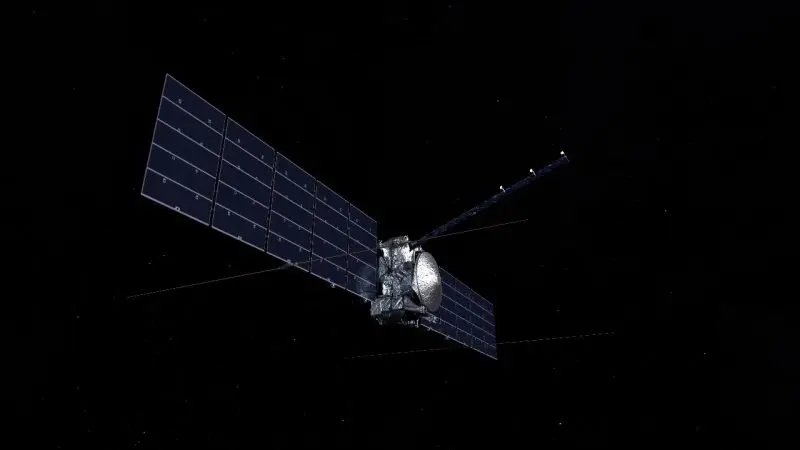
The message for extraterrestrial civilizations contains multi-level information, including 2.6 million names on a silicon microchip. These were left on the website of the National Aeronautics and Space Administration (NASA) by all those who participated in the “Message in a Bottle” campaign.
Jet Propulsion Laboratory NASA It was reported that the Europa Clipper spacecraft will launch on October 10. After traveling 2.6 billion kilometers, it will reach Jupiter’s orbit in 2030 and conduct 49 close flybys of Europa.
And what’s on the record?
The metal plate measuring 18 by 28 centimeters is made of tantalum. Both sides of the plate are adorned with graphic elements.
In addition to the microchip with names, the artifact also features an engraving with a handwritten inscription by the famous American poet Ada Limón: “Ode to Mystery: A Poem for Europe.”
On the outer panel of the plate, scientists placed sound waves collected by linguists that transmit the word “water” in 103 languages of the Earth. The audio files were converted into signal forms (visual representations of sound waves) and engraved onto the plate. In this way, the project team emphasized one of its key goals – the search for the vast ocean that may be hidden beneath the icy surface of Europa.
In the spirit of the “Golden Record” of the Voyager spacecraft, which carries sounds and images that convey the richness and diversity of life on Earth, the multilayered message on Europa Clipper offers a vivid introduction to our planet.
“The message about the connection through water, essential for all forms of life, beautifully illustrates the link between Earth and this mysterious oceanic world that we are about to explore,” said Lori Glaze, director of the Planetary Science Division at headquarters. NASA (Washington) .
Since the search for habitable conditions is central to the mission, the Drake equation is also engraved on the inner side of the disc. This refers to the mathematical formula for estimating the potential number of extraterrestrial civilizations, developed by astronomer Frank Drake in 1961. Since then, this equation has inspired and guided research in astrobiology and related fields.
In addition, the drawing on the inner side of the plate will include references to radio frequencies that are considered suitable for interstellar communication. These frequencies correspond to radio waves emitted in in space components of water and known to astronomers as “water holes.” They are depicted on the plate as lines of radio emissions.
Ultimately, the message includes a portrait of one of the founders of planetary science – Ronald Greeley. His work on the mission to Europa two decades ago laid the groundwork for this year’s Europa Clipper flight.
“We put a lot of thought and inspiration into this plate design, as well as into the mission itself,” said project researcher Robert Pappalardo from NASA’s Jet Propulsion Laboratory in Southern California.
A little about the mission
The main scientific goal of the Europa Clipper is to determine whether there are places beneath the icy moon of Jupiter where life could be supported. The key objectives of the mission are to determine the thickness of Europa’s ice shell and investigate its interaction with the ocean beneath, as well as to study the geology of the moon and its potential for supporting life. A detailed exploration of Europa during the mission will help scientists better understand the astrobiological potential of inhabited worlds beyond our planet.
To view the message and listen to the audio recordings, please follow the link: go.nasa.gov/MakeWaves.
